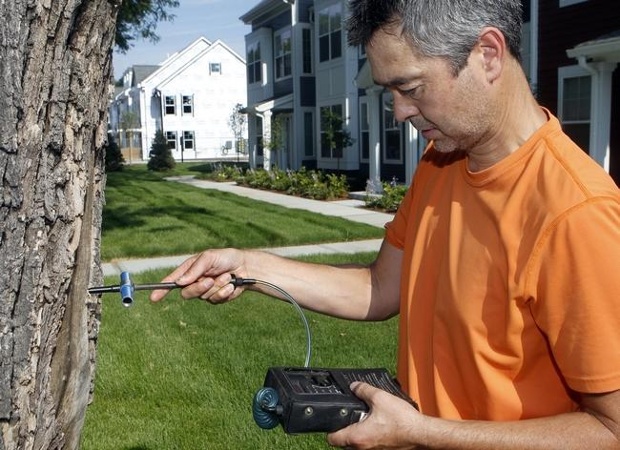
“Yup, that’s a leak,” he said. A strong smell of natural gas rose from the sewer line.
Around him, the physical evidence of gas line repair work – road patches, yellow spray paint, “bang bar” holes in the pavement covered by little, plastic NStar badges – littered Natick’s Grove Street by the North Main Street intersection. Dead trees, struggling trees and browning grass bordered the road.
Phillips is a Boston University professor who, for years, has championed the issue of unrepaired and unreported leaks.
Dressed in running shoes, shorts and a T-shirt, he sat on his legs by the leak. He pulled a black box with a dipstick, reminiscent of an over-sized, medical grade thermometer – a Combustible Gas Indicator or CGI – out of his backpack.
He stuck the dipstick into the same slot he’d stuck his nose. It read positive for methane gas.
“Leaks tend to migrate down a line,” he said. Once the company fixes a spot in the pipe, gas pressure will puncture another hole.
Across the state, officials believe there are close to 25,000 leaks in natural gas lines. Most of them receive “grade three” legal status, which means the energy companies have no obligation to fix them. Unless it’s concentrated in a way that could lead to explosions, the gas continues to spill into the ground and then the atmosphere unabated.
In 2014, when the state passed legislation aimed at fixing gas leaks, it relegated the leaks to three grades. Grade one indicates the risk of an explosion. These the gas companies need to fix right away. Grade two means the leak has less of a risk but could grow worse. Those the company has six months to fix. Grade three leaks can go on leaking forever, so long as the company monitors them. Of the 25,000 leaks, officials estimate only 2,000 are grade one or grade two.




